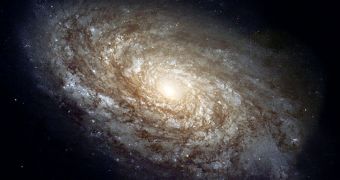According to the conclusions of a new scientific research from experts at the Niels Bohr Institute (NBI), it would appear that the first galaxies to develop in the early Universe evolved a lot faster than previously calculated.
The study focused primarily on galaxies that began forming around 12 billion years ago, when the Universe itself was less than 2 billion years old. The main implication this work carries is that the conditions for the development of planets and life were met a lot earlier than first believed.
In a paper published in the latest issue of the esteemed scientific journal Monthly Notices of the Royal Astronomical Society Letters, the scientists suggest that numerous extrasolar planets may have existed billions of years ago, and have since disappeared.
Conducting this type of studies is very difficult, since the Universe does not have any proper light sources for the first few hundred million years after the Big Bang. The latter occurred around 13.75 billion years ago, and produced gases and particles that existed in a hot and dense primordial soup.
Since this substance was not evenly distributed through the ever-expanding space, gravity centers emerged, around which the first stars began to form. This process is believed to have begun around 500 million years after the Cosmos rapidly expanded into being.
In the earliest galaxies, stars most likely contained nothing more than hydrogen and helium, and were of massive sizes. This means that they only lived for a few million years, before blowing up in huge supernova events, EurekAlert reports.
This phenomenon seeded the Universe with heavier chemicals, which were produced from nuclear fusion inside the earliest stars. These elements include carbon, oxygen and silicon, some of the basic building blocks of planets.
“We have studied 10 galaxies in the early Universe and analyzed their light spectra. We are observing light from the galaxies that has been on a 10-12 billion year journey to Earth, so we see the galaxies as they were then,” University of Copenhagen NBI Dark Cosmology Center professor Johan Fynbo says.
“Our expectation was that they would be relatively primitive and poor in heavier elements, but we discovered somewhat to our surprise that the gas in some of the galaxies and thus the stars in them had a very high content of heavier elements. The gas was just as enriched as our own Sun,” he concludes.

 14 DAY TRIAL //
14 DAY TRIAL //